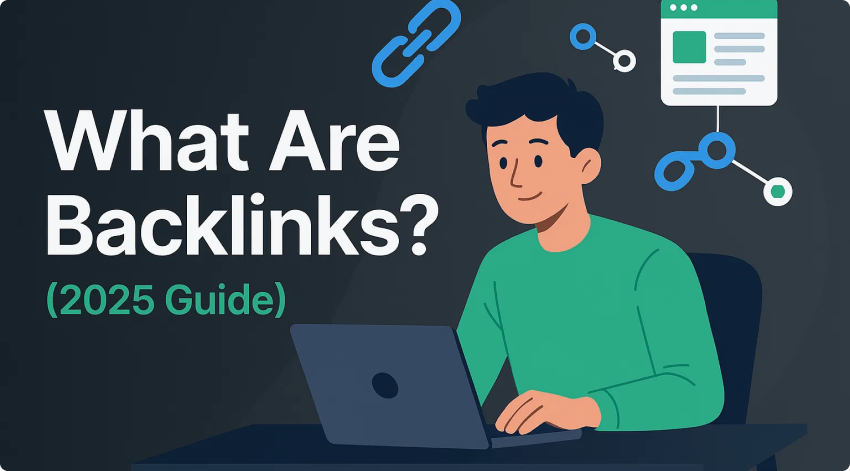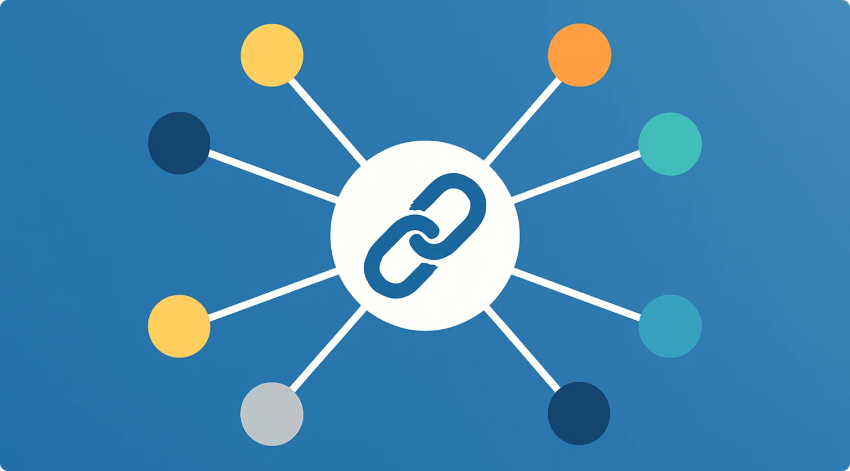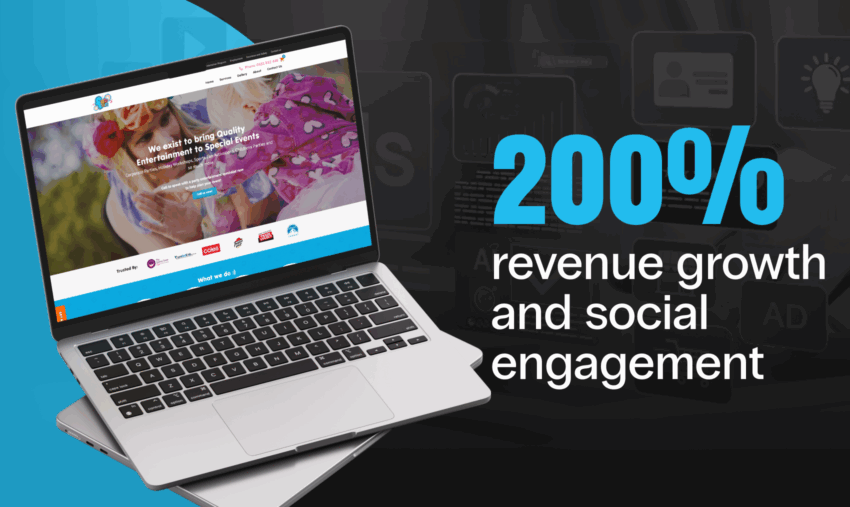
In SEO, authority is earned, and one of the strongest signals of authority is when other websites link to yours. Each link acts like a citation, telling Google that this site is trustworthy, relevant, and worth ranking. The right links can help you climb search results, while the wrong ones can hold you back.
This guide explains what backlinks are, why they remain crucial in 2025, and how to build them strategically without wasting budget.
TL;DR – Key Takeaways
- Backlinks are links from other websites that act as digital votes of confidence.
- In 2025, context and quality outweigh sheer quantity.
- The strongest links are earned naturally — not bought or manipulated.
- Regular audits are essential to keep toxic links from hurting your search visibility.
What Are Backlinks?
A backlink is simply a hyperlink from one website to another. You’ll also hear them called inbound links, referring sites, or citation signals. Backlinks are considered one of the core building blocks of SEO, and guides like Semrush’s explanation of backlinks underline how central they are to ranking success.
Think of backlinks as digital word-of-mouth. When a reputable site points readers to your content, it vouches for you. Strong backlinks can mean the difference between blending in and standing out for businesses already investing in SEO strategy.
Why Backlinks Still Matter in 2025
Google’s algorithm may evolve, but backlinks remain among the strongest ranking factors. The right trust signals can help you:
- Climb higher in search results by proving authority and relevance.
- Bring in referral traffic from trusted websites.
- Strengthen brand credibility in your market.
One high-quality editorial link often outweighs hundreds of weak or irrelevant ones. Even marketing platforms like Mailchimp’s glossary of backlinks point to backlinks as a foundation of modern SEO.
According to the Semrush Ranking Factors study, backlinks remain among the top three signals Google evaluates when determining site authority.
Types of Backlinks (And Which Ones Count)

Not every backlink carries the same weight. Here’s a quick comparison:
|
Backlink Type |
Value |
Why It Matters |
|
Dofollow |
High |
Passes authority (“link equity”) directly to your site |
|
Nofollow / Sponsored / UGC |
Moderate |
Adds diversity, beneficial for traffic, but limited SEO benefit |
|
Editorial mentions |
Gold standard |
Natural links within content; strongest trust signals |
|
Resource pages / directories |
Useful |
Particularly valuable when tied to local SEO visibility |
|
Spammy / toxic links |
Negative |
Risky, can hurt rankings or trigger penalties |
What Makes a Backlink Valuable?
The best links aren’t just any links. They share a few key traits:
- They come from authoritative, trustworthy websites.
- They’re placed contextually within relevant content.
- The anchor text feels natural, not overstuffed with keywords.
- They contribute to a diverse backlink profile rather than repeating the same pattern.
Links from relevant, authoritative sources carry more weight than dozens of generic mentions.
For example, a mention in an Australian business publication like SmartCompany carries far more value than dozens of irrelevant links from low-quality blogs. For those building a long-term link building strategy, editorial placements are the gold standard.
Data from Ahrefs’ link-building research shows that nearly two-thirds of all online pages have no backlinks, which highlights how even a handful of authoritative links can dramatically improve search visibility.
Authority links are scarce. Earning just a few can put you ahead of most competitors.
How to Build Backlinks in 2025

There are countless ways to earn backlinks, but the most effective methods fall into three categories:
- Getting started: Guest posting for industry blogs, creating shareable assets like infographics, or getting listed in local directories.
- Levelling up: Broken link building (replacing dead links with your content), the skyscraper technique (improving competitor content), and digital PR campaigns.
- Advanced tactics: Brand mention reclamation, commissioning original research, and co-marketing partnerships.
Backlink growth is best achieved in stages. Start with the basics, scale with advanced techniques, and always focus on creating assets people genuinely want to link to. Shortcuts like paid link schemes often backfire.
Keeping Your Link Profile Clean
Not all backlinks help your rankings. Toxic links from spammy directories, irrelevant sites, or hacked pages can hold you back.
Regular backlink audits are critical. Tools like Google Search Console, Ahrefs, or Semrush can highlight risky links. If you find a problem, try contacting the site owner for removal, and if that fails, use Google’s Disavow Tool cautiously.
A healthy link profile is about consistent pruning, removing bad links while nurturing the good ones.
Measuring Backlink ROI
Backlinks aren’t just about prestige. They should drive measurable results. Look at:
|
Metric |
Why It Matters |
|
Organic keyword rankings |
Track visibility improvements |
|
Domain authority/trust |
Gauge long-term authority building |
|
Referral traffic |
See if visitors from linking sites engage |
|
Conversions |
Measure ROI beyond traffic |
Data from DemandSage shows that 94% of website pages have no external links, underscoring how even a small number of high-quality referring sites can significantly aid search visibility.
Strong backlinks should move the needle on search visibility and your bottom line.
The Australian Advantage
For businesses in Australia, backlinks aren’t just global; they’re local. Listing in Australian directories, joining chambers of commerce, and earning coverage in outlets like AFR help build site authority and brand recognition.
- Local link building in Australia can come from sponsorships, local business associations, or community media.
- Backlinks for Australian businesses often double as marketing, driving credibility and search performance.
BrightLocal’s Local Search Industry Survey found that over 89% of SEO professionals consider local link building a high-impact factor for ranking small businesses.
Backlink FAQs
Are backlinks still important in 2025?
Search engines still treat backlinks as a significant ranking signal, but they now weigh context as much as the link itself. Links surrounded by relevant, high-quality content carry far more authority signals.
How many backlinks do I need?
It depends on your competition. A small café might only need a handful of strong local citations to rank, while a national fintech startup may require hundreds. Benchmarking against top competitors is the best guide.
Do backlinks from social media count?
Most are “nofollow,” so they don’t pass link equity. But they help amplify content, often leading to natural citations from journalists, bloggers, or partners.
How long does it take for backlinks to improve rankings?
Results can vary. High-authority links can show movement in weeks, while a steady build-up of smaller referring domains compounds over months. Consistency is key.
Start Building Authority With Backlinks That Work
Backlinks are still the backbone of SEO in 2025. Done right, they help you rank higher, gain credibility, and attract steady streams of visitors. If done wrong, they can waste the budget or even trigger penalties.
We’ve built successful backlink strategies for eCommerce, SaaS, and local businesses across Australia. The common thread? Transparency, speed, and senior-level expertise that turns links into real trust signals.
Ready to grow your site authority with backlinks that deliver results? Partner with a team that blends SEO expertise with proven strategies and a client-first partnership model.
Start building your authority today, and make every link count.



